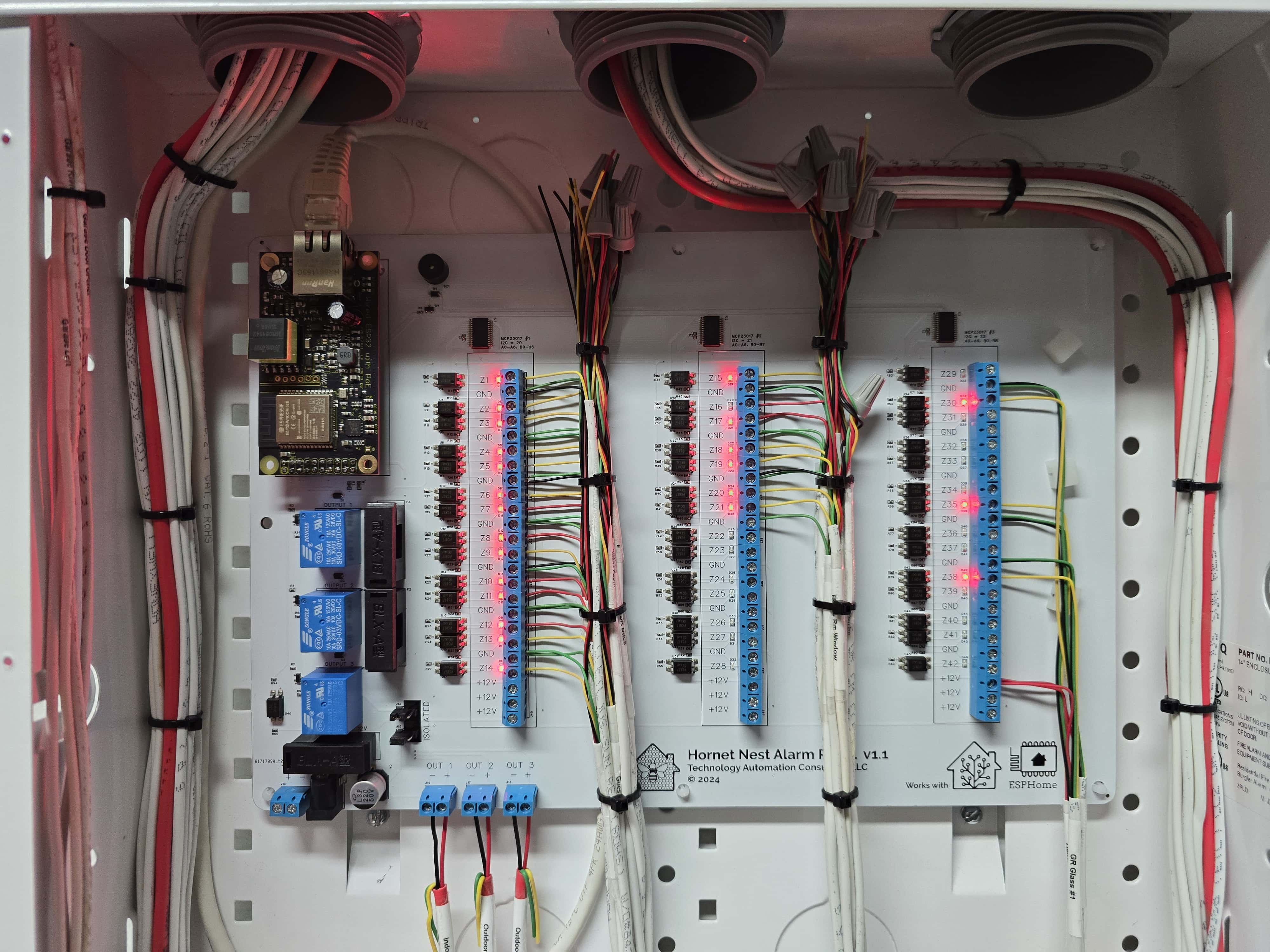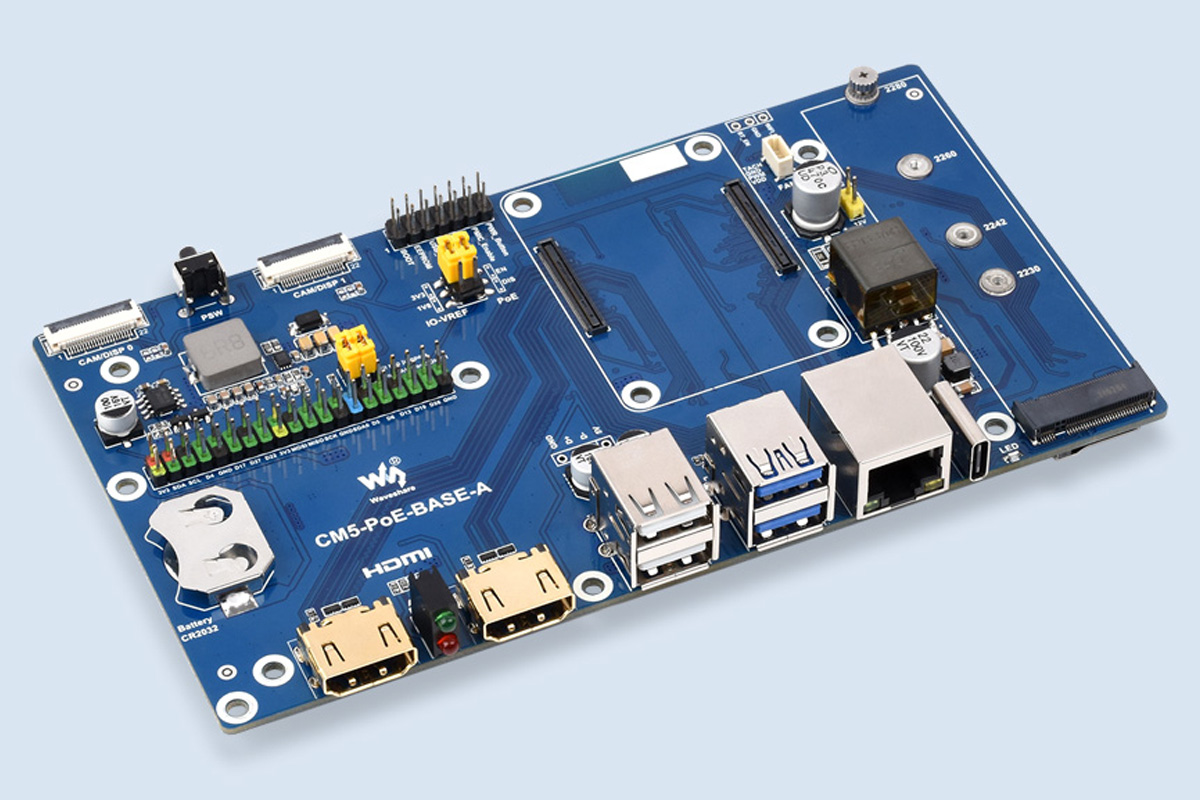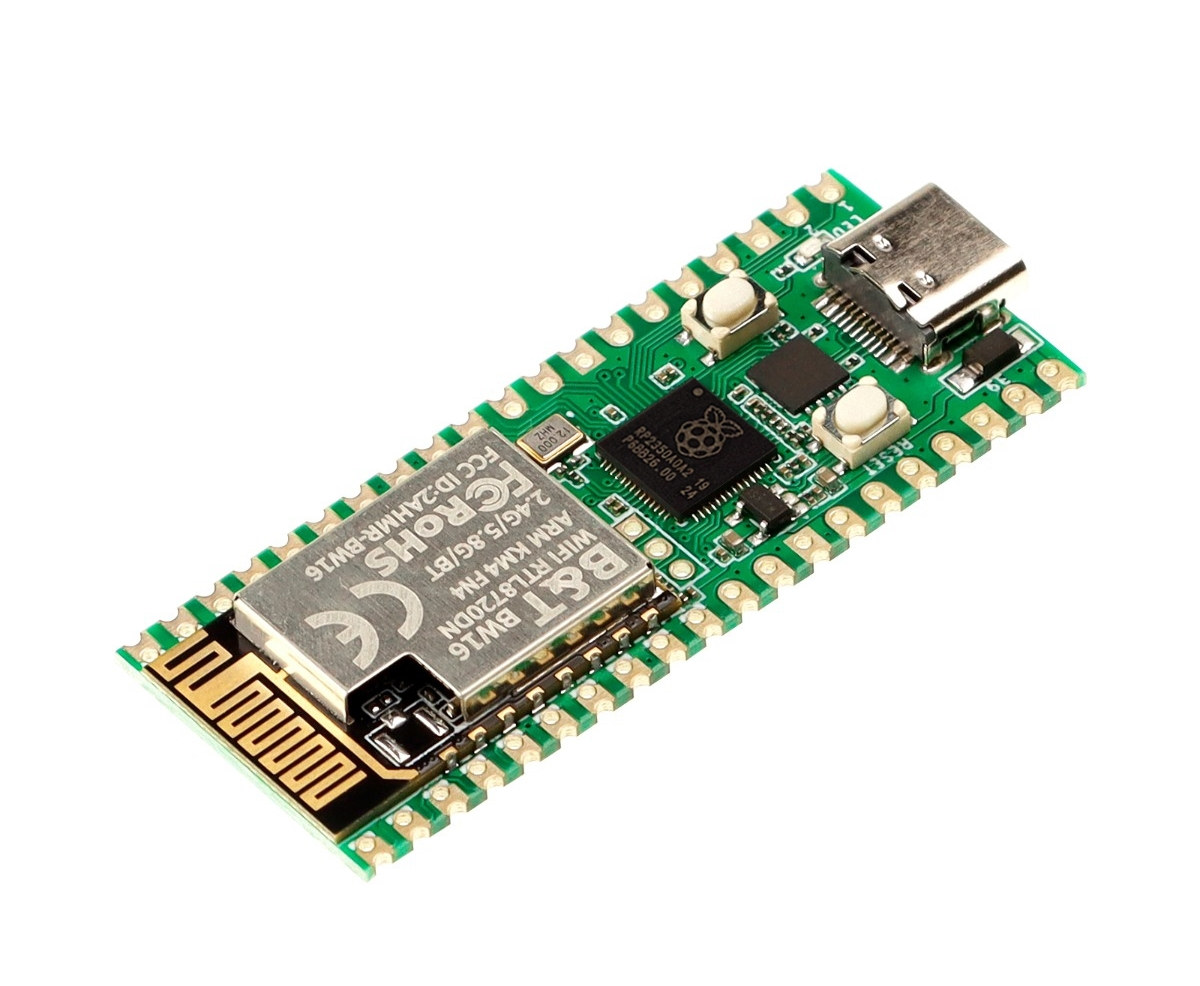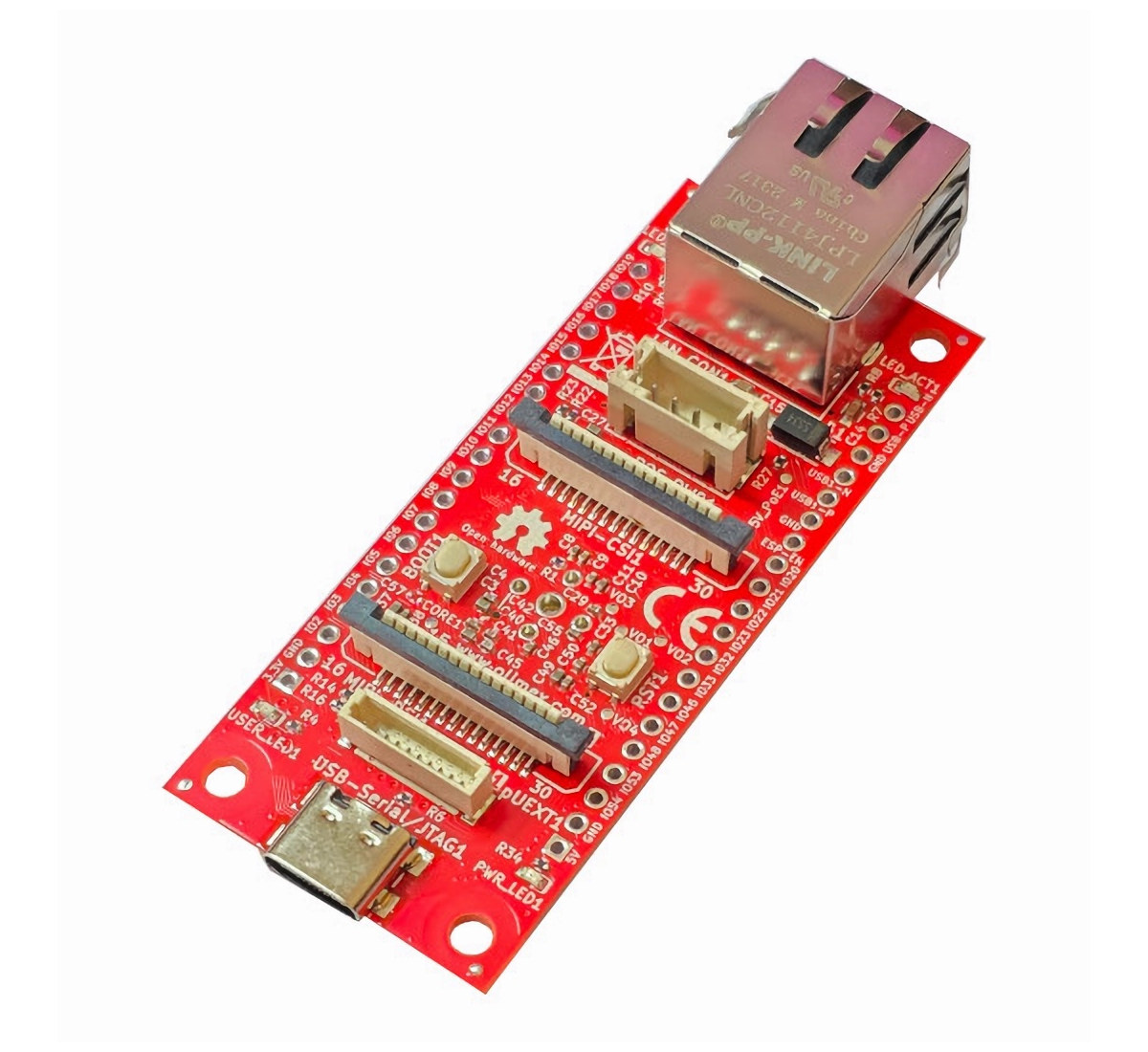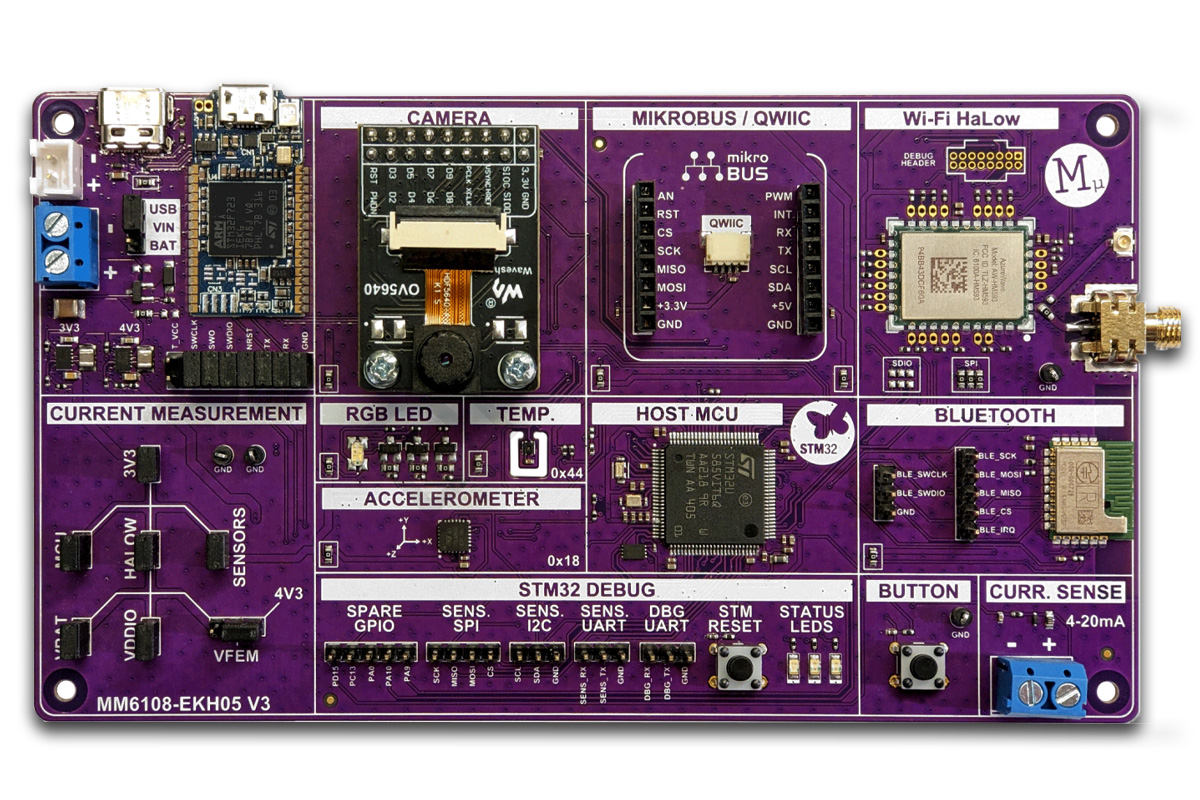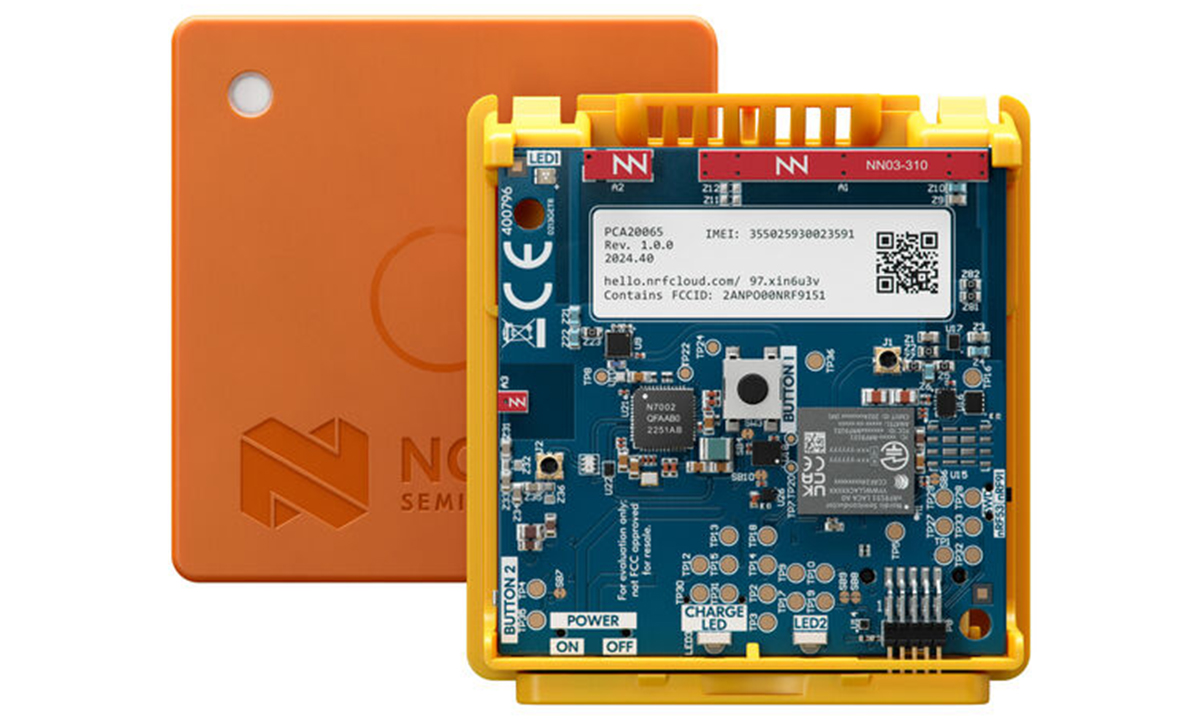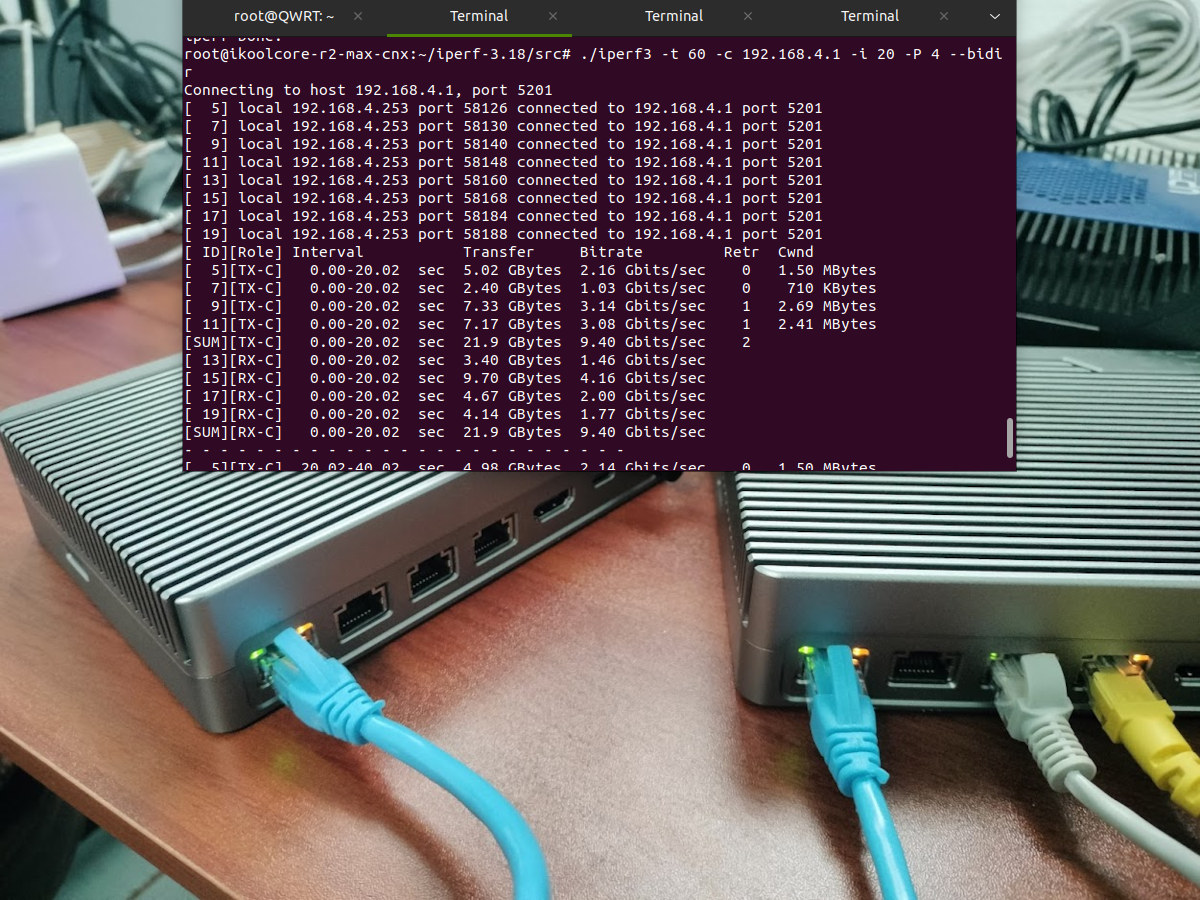The Hornet Nest Alarm Panel is a customizable, ESP32-based alarm control system designed and produced by US-based Technology Automation Consulting for home security automation. The device is powered by the wESP32 Ethernet board with PoE support and is compatible with Home Assistant through the ESPHome firmware. It features up to forty-two optoisolated zones, six MOSFET-controlled outputs, and six additional trigger outputs for 3.3V devices. It integrates a piezo buzzer and supports add-ons like a Wiegand keypad and water leak sensors. The Hornet Nest Alarm ESP32-based home security platform “aims to bridge the gap between traditional wired security systems and the flexibility of modern smart home automation.” Christopher Greenless of Technology Automation Consulting says the project was born from his need for a robust and smart security system to integrate with his Home Assistant setup. Proprietary solutions were inadequate and limited while DIY options were inefficient and often unreliable. He created […]
Raspberry Pi CM5 gets carrier boards with built-in PoE/PoE+
Waveshare has recently launched CM5-PoE-BASE-A, a compact development and evaluation board that supports all variants of the Raspberry Pi Compute Module 5 (CM5). While searching for more information about this product I came across Modulo5 IO PoE+, another development board from Pineboards also designed for the RPi CM5 module. Pineboards’ Modulo5 IO PoE+ offers a premium UK-manufactured PoE+ module capable of delivering 25W continuous power, with support for NVMe storage and compatibility with the Raspberry Pi 5 Active Cooler. On the other hand, Waveshare’s CM5 PoE Base Board features a Gigabit Ethernet port featuring 802.3af/at PoE compliance, peripheral options include dual HDMI, USB 3.2 ports, and NVMe support. Both boards feature specifications similar to the official Raspberry Pi CM5 IO board with the main difference being built-in PoE/PoE+ support, along with some cosmetic changes. While the Raspberry Pi CM5 IO board does come with a 4-pin PoE connector, it requires […]
Pico W5 is a Raspberry Pi Pico 2 W alternative with RP2350 MCU, dual-band WiFi 4, 8MB flash
The Pico W5 is a Raspberry Pi RP2350 development board providing an alternative to the official Raspberry Pi Pico 2 W with dual-band (2.4GHz/5GHz) WiFi 4 and Bluetooth 5.0 connectivity through a B&T BW16 wireless module. Besides dual-band WiFi, there are a few other small changes compared to the Raspberry Pi Pico 2 W, including a USB Type-C connector, a larger 8MB flash, and a Reset button. As far as I know, it’s the first RP2350 board with 5GHz WiFi, as other RP2350 boards with WiFi, such as the Challenger+ RP2350 WiFi6/BLE5 and Pimoroni Pico Plus 2 W, only support 2.4GHz WiFi. Pico W5 specifications: SoC – Raspberry Pi RP2350 CPU Dual-core Arm Cortex-M33 @ 150 MHz with Arm Trustzone, Secure boot and Dual-core RISC-V Hazard3 @ 150 MHz Only two cores can be used at any given time Memory – 520 KB on-chip SRAM Security 8KB of anti-fuse OTP […]
Olimex ESP32-P4-DevKit offers Ethernet, USB JTAG, MIPI DSI and CSI interfaces
Olimex ESP32-P4-DevKit is a compact development board powered by a 400 MHz ESP32-P4 general-purpose dual-core RISC-V microcontroller with a 10/100Mbps Ethernet RJ45 connector, a USB-C Serial/JTAG connector, MIPI DSI/CSI connectors for a display and a camera, GPIO headers and UEXT connector, Boot and Reset buttons, and a few LEDs. In some ways, it offers similar to the Waveshare ESP32-P4-NANO board we covered last month, but in a different form factor, and it lacks WiFi 6 connectivity and a USB Type-A connector. It’s also much more compact and cheaper than the official ESP32-P4-Function-EV-Board launched this summer, but again, with fewer features. Olimex ESP32-P4-Devkit: Microcontroller – ESP32-P4 MCU Dual-core RISC-V microcontroller @ 400 MHz with AI instructions extension and single-precision FPU Single-RISC-V LP (Low-power) MCU core @ up to 40 MHz GPU – 2D Pixel Processing Accelerator (PPA) VPU – H.264 and JPEG codecs support Memory – 768 KB HP L2MEM, 32 […]
Save up to 50% on PCB orders with PCBWay Christmas 2024 Big Sales event (Sponsored)
PCBWay has a special treat for Christmas 2024 with the Big Sales event for up to 50% on PCB manufacturing and assembly services. But that’s not all, as the PCB manufacturer also offers free coupons, free PCB prototypes for Christmas, and a game to win free modules. Let’s have a closer look at each offer and conditions. Nine coupons are offered including several valid for all services, and two specific to the company’s CNC and 3D printing services: $5 discount for $30 or more orders $10 discount for $59 or more orders $15 discount for $109 or more orders $30 discount for $279 or more orders $50 discount for $699 or more orders $100 discount for $1299 or more orders $200 discount for $2999 or more orders CNC and 3D printing coupons: $5 discount for $29+ orders, and $20 off for $199+ orders You’ll be asked to log in to […]
STM32-powered MM6108-EKH05 Wi-Fi HaLow evaluation kit supports Bluetooth, Camera, and Qwicc/MikroBus modules
Morse Micro has recently launched the MM6108-EKH05 Wi-Fi HaLow Evaluation Kit designed to reduce the development and deployment time of IoT products. Built around the Morse Micro MM6108 HaLow SoC, this kit combines long-range, low-power wireless connectivity with a range of integrated sensors, making it ideal for IoT engineers and developers. Key features include Wi-Fi HaLow connectivity, an STM32U585 Cortex-M33 MCU, integrated sensors (temperature, humidity, accelerometer), 16 MB of SPI Flash memory, programmable GPIOs, power measurement tools, and WPA3 security for reliable and secure communication. The kit also includes alternative power options including USB, battery, or external power, and embeds support for a camera, MikroBus and Qwicc expansion modules, Bluetooth, and current measurement circuitry. All these features make this kit useful for applications including smart homes, industrial automation, and agricultural monitoring. MM6108-EKH05 specifications: MCU – STM32U585 Arm Cortex-M33 microcontroller @ 160 MHz with TrustZone, 2 MB Flash Storage – 16Mbit […]
Nordic Thingy:91 X multi-sensor cellular IoT platform combines nRF9151 LTE IoT SiP, nRF5340 BLE SoC, and nRF7002 WiFi 6 IC
Nordic Semiconductor introduced the Nordic Thingy:91 in mid-2019, a cellular IoT prototyping platform built around the Nordic nRF9160 system-in-package (SiP). It supports LTE-M, NB-IoT, and GPS, and includes features like an Arm Cortex-M33 core, Arm TrustZone security, and flash memory. The platform is ideal for creating IoT Proof-of-Concepts, demos, and prototypes, making it easy to test and deploy IoT applications. The upgraded Nordic Thingy:91 X features the new Nordic nRF9151 SiP, offering support for LTE-M, NB-IoT, GNSS, and DECT NR+ for global connectivity, integrates the nRF5340 SoC for USB and Bluetooth LE, and the nRF7002 IC for Wi-Fi locations. The platform includes sensors for environmental and motion sensing, one expansion connector for Qwiic/STEMMA QT and Grove modules, and antennas for LTE, GNSS, and Wi-Fi. Additionally, the kit also features a Nano/4FF SIM slot, two SIM cards, and a 1,350 mAh Li-Po battery managed by nPM6001 and nPM1300 PMICs, to support field […]
How to use iperf3 in multi-thread mode for 10Gps+ Ethernet testing
With 10GbE becoming more widespread and often found in entry-level hardware, the CPU may become the bottleneck, so I’ll explain how to use iperf3 in multi-thread mode to fully saturate the 10GbE bandwidth even with a system based on a relatively low-end multi-core processor.
For this tutorial, I use two iKOOCORE R2 Max mini PCs with two 10GbE interfaces each and an Intel N100 quad-core processor running an OpenWrt fork (QWRT) and Proxmox VE (Debian) respectively. I will show how I can fully saturate the 10GbE interfaces using multithreading, but not with a typical iperf3 single-core test.


